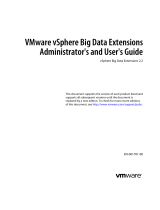Page is loading ...

Applies to version 3.1.0.14 or later
Yealink Device Management Platform Quick Start Guide

Geting Started
Hardware and Software Requirements
Overview
Yealink Device Management Platform (YDMP) allows administrators to realize centralized management for Yealink IP phones, Skype for
Business HD T4XS IP phones and video conferencing systems in the same enterprise.
1
Linux operating system: CentOS 7.5 or later.
Device Quantity Hard Drive
0~6000
6000~15000
16G
15000~30000
CPU
8-core
16-core
32-core
RAM
32G
64G
There should be at least 200G partition used for
installing the device management platform,
and the capacity of the hard drive increases
by 30G with every 1000 devices added.
Port Requirements
You need open four ports for YDMP: 443, 9989, 9090, and 80. We do not recommend that you modify those ports.

2
Installating YDMP
Updating YDMP
The following is an example of installing V3.1.0.13.
Before you begin
One device running CentOS.
Your hardware, software and ports meet the requirements.
Obtain the latest installation package of YDMP from the Yealink distributor or SE and then save it at the path /usr/local.
Procedure
1. Log into CentOS as the root user and open the terminal.
2. Run the command below:
cd /usr/local
tar -zxf DM_3.1.0.13.tar.gz
cd yealink_install&& tar -zxf install.tar.gz
./install --host 10.2.62.12
If it prompts “Install Success!!!”, the installation succeeds.
The following is an example of updating from V2.0.0.14 to V3.1.0.13.
Before you begin
Your hardware, software and ports meet the requirements.
Obtain the latest installation package of YDMP from the Yealink distributor or SE and then save it at the path /usr/local.
Procedure
1. Log into CentOS as the root user and open the terminal.
2. Run the command below:
cd /usr/local
tar -zxf DM_3.1.0.13.tar.gz
cd yealink_install&& tar -zxf install.tar.gz
./upgrade_v2_to_v3.sh
3. According to the prompts, enter “1” (1 means updating).
4. According to the prompts, enter the server IP address and then enter “Y” to confirm the IP address.
YDMP will be updated to the corresponding version if it is updated successfully.

1. Open a web browser.
2. Enter https://<IP address>/ (for example: https://10.2.62.12/) in the address box.
3. Optional: select a desired language.
4. Enter your username (default: admin) and the password (default: v123456789), and click Login.
5. If you log into the platform for the first time, the system will remind you to change the password. After that, you can go to the
Home page of YDMP.
3
Step1: Importing the Device Certificate
1. Obtain the device lcertificate from Yealink by submitting the enterprise name, the distributor name, the applicant, and the country.
2. Follow the instructions in the picture below to upload the certificate.
After activating the license, you can manage your devices via YDMP.
Logging into YDMP
Activating the License

Step2: Acticating the License
4
1. You need purchase the corresponding service and obtain the authorization for the device management.
2. If the server can access the public network, you can activate the license online. If not, you can activate the license offline.
※ Online
※ Offline

Deploying the Device
5
1. Connect the device to the network.
2. The device and the server perform mutual TLS authentication using default certificates.
3. Obtain the server address:
With a running provisioning server, you need to configure the corresponding Common.cfg file (for example, <y0000000000xx>.cfg).
In the corresponding Common.cfg file, do the following:
① If the firmware does not support YMDP, you need configure the parameters.
② Configure the provisioning URL to connect the device to YDMP.
Without a runing provisioning server, you can obtain the server address via the DHCP option 66, 43, 160 or 161.
The DHCP option value must meet this format: https://<IP address>/dm.cfg (for example: https://10.2.62.12/dm.cfg).
After you finish the deployment, the device will be connected to YDMP and be displayed in the Device List.
Deploying the Device

6
Editing Devices
Using Basic Function

※ Configuring and Updating the Parameter to the Device
Managing the Configuration
※
Adding the Configuration Template
Step 1: click to go to the Set Template Parameters page.
7

Step3: Update the device configuration file immediately.
8
6
Step 2: Configure the parameters.

Step 4: Push the parameters to update it.
Step 5: Select the execution mode.
9

10
SMTP mailbox can be used to send the related information to the users or the administrators, such as the alarm and the account
information.
Setting the SMTP Mailbox

11
There are two types of administrators: system administrator and sub-administrator.
If you are the system administrator, you can add sub-administrator accounts.
Before you begin
You set the SMTP mailbox (on page 10).
Managing the Sub-Administrator Account

12
When the devices are abnormal, they will send alarms to the platform. You can solve the problem by monitoring the alarms.
Before you begin
You set the SMTP mailbox (on page 10).
Editing the System Administrator Email
※
This mailbox is used for receiving the alarm and the account information.
Monitoring the Alarm

13
※
Adding the Alarm Strategy
Viewing the Alarm
※

14
More Information
For more information about YDMP, refer to http://support.yealink.com/.
/
